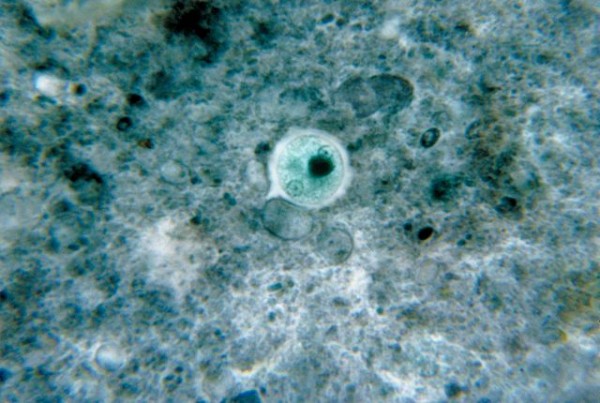Amoeba "Chews" its Way Through Cells

An amoeba that causes many common infections has been discovered to literally bite its way through cells to invade human intestines, according to new research investigating the parasite.
Entamoeba histolytica, an amoeba parasite that commonly infects and causes damage to human intestinal walls, is a particular nuisance in some low-income countries but can even be found in healthy people in the United States.
According to the U.S. Centers for Disease Control and Prevention (CDC), the hystolytica microbe can be found even in the bodies of healthy individuals, but can do little damage if not given a chance to colonize. However, in countries where antibiotics and sanitation are rarely seen -- such as the slums of India and Somalia -- the amoeba is known to colonize in the large intestine and bore into the intestinal wall. In some rare cases, this microbial infection has even been known to make its way all the way through the intestine to move on to infect the liver.
Commonly, the human body is strong enough to fight off these infections and they usually only causes severe diarrhea in young children. Still, in some rare cases it has been known to contribute to death.
Previously, it was unknown how the amoeba "burrows" through the intestinal wall, but a study published in Nature details how researchers have recently determined that the parasites literally "bite" their way through human cells, killing them off after leaving gaping wounds.
Study co-author William Petri of the University of Virginia said that this brutally efficient mode of infection was something that scientists have overlooked for "literally 100 years."
"I've spent my entire career studying this parasite ... and I didn't realize this was happening," Petri explained to the Detroit Free Press for a special for USA Today.
Of course, the blob-like amoeba doesn't really have teeth. Instead, the parasite has been observed engulfing a portion of a human tissue cell and pinching it off, leaving a gaping hole in the victim cell that will lead to its eventual death.
According to the authors of the study, understanding the mechanics of this intestinal infection will help researchers determine new and effective way to fight it.
The study was published in Nature on April 9.
Apr 09, 2014 05:55 PM EDT





